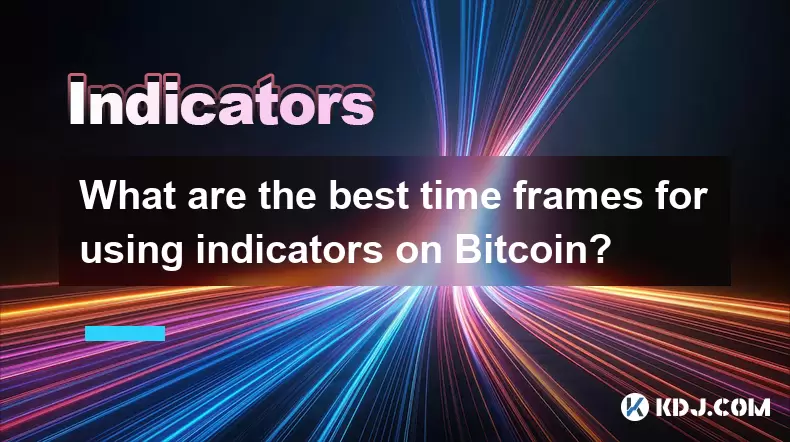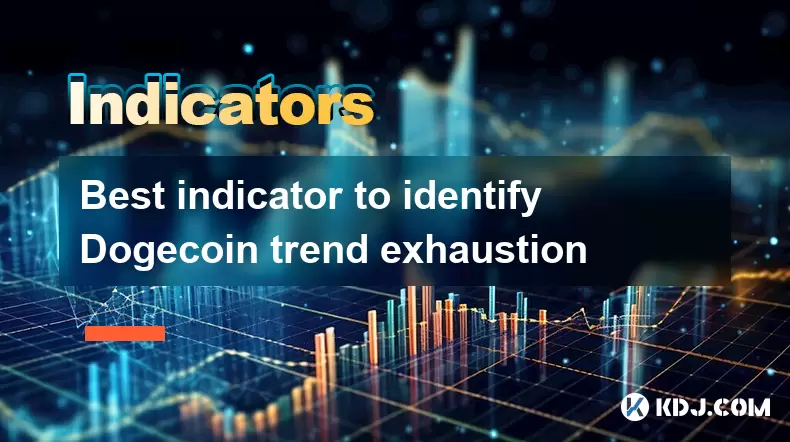-
 Bitcoin
Bitcoin $108,778.4882
0.68% -
 Ethereum
Ethereum $2,563.3783
2.01% -
 Tether USDt
Tether USDt $1.0001
-0.01% -
 XRP
XRP $2.2881
0.77% -
 BNB
BNB $662.2819
1.12% -
 Solana
Solana $152.2652
3.21% -
 USDC
USDC $0.9999
-0.01% -
 TRON
TRON $0.2873
0.90% -
 Dogecoin
Dogecoin $0.1715
4.20% -
 Cardano
Cardano $0.5868
1.50% -
 Hyperliquid
Hyperliquid $39.6796
1.73% -
 Sui
Sui $2.9136
0.85% -
 Bitcoin Cash
Bitcoin Cash $495.4980
1.77% -
 Chainlink
Chainlink $13.5765
3.06% -
 UNUS SED LEO
UNUS SED LEO $9.0753
0.53% -
 Stellar
Stellar $0.2503
3.73% -
 Avalanche
Avalanche $18.2012
1.86% -
 Shiba Inu
Shiba Inu $0.0...01174
1.83% -
 Toncoin
Toncoin $2.7998
-6.08% -
 Hedera
Hedera $0.1596
3.89% -
 Litecoin
Litecoin $87.3119
0.20% -
 Monero
Monero $319.5596
1.08% -
 Polkadot
Polkadot $3.3887
0.93% -
 Dai
Dai $0.9999
-0.01% -
 Ethena USDe
Ethena USDe $1.0001
-0.01% -
 Bitget Token
Bitget Token $4.3294
-1.36% -
 Uniswap
Uniswap $7.3898
1.60% -
 Aave
Aave $287.5336
5.76% -
 Pepe
Pepe $0.0...01005
3.24% -
 Pi
Pi $0.4588
1.90%
What are the best time frames for using indicators on Bitcoin?
Bitcoin traders use different time frames—from 1-minute charts for scalping to weekly charts for long-term investing—to analyze price trends and improve decision-making with technical indicators.
Jul 07, 2025 at 03:07 pm

Understanding the Role of Time Frames in Bitcoin Trading
In Bitcoin trading, time frames play a crucial role in interpreting technical indicators effectively. Traders use various time intervals—such as 1-minute, 15-minute, hourly, daily, and weekly charts—to analyze price movements and make informed decisions. Each time frame offers unique insights depending on the trader's strategy, whether it’s scalping, day trading, swing trading, or long-term investing. The best time frames for using indicators depend heavily on the type of analysis being conducted and the goals of the trader.
Short-Term Trading: 1-Minute to 1-Hour Charts
For traders focused on short-term strategies, such as scalping or intraday trading, lower time frames like the 1-minute, 5-minute, or 15-minute charts are often used. These time frames allow for quick decision-making based on fast-moving indicators like the Relative Strength Index (RSI) or Moving Average Convergence Divergence (MACD). However, these time frames can be noisy and prone to false signals due to market volatility.
- Use the 1-minute chart for ultra-fast trades but expect high noise.
- Apply RSI (14) to detect overbought or oversold conditions quickly.
- Combine with volume indicators to filter out fakeouts.
Traders must ensure they have a robust risk management system in place when operating on these short time frames.
Medium-Term Trading: 4-Hour and Daily Charts
The 4-hour and daily charts are preferred by traders who aim to capture medium-term trends in Bitcoin prices. These time frames strike a balance between responsiveness and reliability, making them ideal for strategies that rely on moving averages, Bollinger Bands, or Fibonacci retracement levels.
- Apply the 20-period Simple Moving Average (SMA) on the 4-hour chart to identify trend direction.
- Use Bollinger Bands to gauge volatility and potential breakout points.
- Confirm signals with daily volume data to enhance accuracy.
These time frames are particularly useful for traders who cannot monitor the markets constantly but still want to engage actively.
Long-Term Investing: Weekly Charts and Beyond
For investors focused on long-term Bitcoin accumulation or holding, the weekly chart becomes the most valuable tool. This time frame smooths out short-term volatility and highlights major support and resistance zones. Indicators such as Ichimoku Cloud or weekly RSI help assess broader market sentiment.
- Analyze weekly Ichimoku Cloud to determine long-term bullish or bearish phases.
- Monitor monthly MACD crossovers for significant trend changes.
- Combine with on-chain metrics for deeper fundamental insight.
Weekly charts are best suited for those who prefer strategic entry points rather than frequent trading.
Multitime Frame Analysis: Combining Perspectives
A powerful approach among experienced traders is multitime frame analysis, where higher and lower time frames are combined to confirm trade setups. For example, a trader might look at the daily chart to determine the overall trend and then switch to the 4-hour or 1-hour chart to find precise entry points.
- Determine trend direction using the daily SMA(50).
- Zoom into the 4-hour chart to spot candlestick patterns.
- Use the 1-hour chart for timing entries based on oscillator divergences.
This layered method helps filter out false signals and increases the probability of successful trades.
Frequently Asked Questions
Q1: Can I rely solely on one time frame for Bitcoin trading?
While it’s possible to trade using only one time frame, especially if you're a beginner, relying solely on it may limit your understanding of broader market dynamics. Using multiple time frames enhances context and improves decision-making accuracy.
Q2: Do all technical indicators perform well across different time frames?
No, not all indicators are equally effective on every time frame. For instance, RSI works better on shorter time frames for spotting quick reversals, whereas Ichimoku Cloud provides clearer signals on daily or weekly charts. Always adjust indicator settings according to the time frame being analyzed.
Q3: How do I choose the right time frame for my trading style?
Your choice should align with your availability, risk tolerance, and strategy. Scalpers benefit from 1-minute to 15-minute charts, while swing traders often focus on 4-hour and daily charts. Long-term investors typically use weekly and monthly charts for strategic planning.
Q4: Is there a standard setting for indicators across time frames?
There is no universal setting. Indicator parameters like RSI (14) or MACD (12,26,9) are default values but may need customization depending on the time frame and asset. For example, reducing RSI periods to 7 on a 15-minute chart can increase sensitivity to rapid price changes.
Disclaimer:info@kdj.com
The information provided is not trading advice. kdj.com does not assume any responsibility for any investments made based on the information provided in this article. Cryptocurrencies are highly volatile and it is highly recommended that you invest with caution after thorough research!
If you believe that the content used on this website infringes your copyright, please contact us immediately (info@kdj.com) and we will delete it promptly.
- Bitcoin Wallet Hack? Coinbase Exec Sounds the Alarm on $8B Whale Movement
- 2025-07-07 18:30:12
- Mercado Bitcoin, Tokenization, and XRP Ledger: A Latin American Power Play
- 2025-07-07 18:30:12
- Ripple's RLUSD: Revolutionizing Cross-Margin Trading for Institutions
- 2025-07-07 18:35:12
- Babylon, Bitcoin, and the EVM Mainnet: A New Era for BTCFi?
- 2025-07-07 16:30:11
- Queen Elizabeth Coin Sells for £31,000: A Royal Fortune in Your Pocket?
- 2025-07-07 16:30:11
- XRP Price Check: Will Resistance Trigger a July Drop?
- 2025-07-07 17:10:12
Related knowledge

How to trade Dogecoin based on funding rates and open interest
Jul 07,2025 at 02:49am
Understanding Funding Rates in Dogecoin TradingFunding rates are periodic payments made to either long or short traders depending on the prevailing market conditions. In perpetual futures contracts, these rates help align the price of the contract with the spot price of Dogecoin (DOGE). When funding rates are positive, it indicates that long positions p...

What is the 'God Mode' indicator for Bitcoincoin
Jul 07,2025 at 04:42pm
Understanding the 'God Mode' IndicatorThe 'God Mode' indicator is a term that has emerged within cryptocurrency trading communities, particularly those focused on meme coins like Dogecoin (DOGE). While not an officially recognized technical analysis tool or formula, it refers to a set of conditions or patterns in price action and volume that some trader...

How to spot manipulation on the Dogecoin chart
Jul 06,2025 at 12:35pm
Understanding the Basics of Chart ManipulationChart manipulation in the cryptocurrency space, particularly with Dogecoin, refers to artificial price movements caused by coordinated trading activities rather than genuine market demand. These manipulations are often executed by large holders (commonly known as whales) or organized groups aiming to mislead...

Bitcoincoin market structure break explained
Jul 07,2025 at 02:51am
Understanding the Dogecoin Market StructureDogecoin, initially created as a meme-based cryptocurrency, has evolved into a significant player in the crypto market. Its market structure refers to how price action is organized over time, including support and resistance levels, trend lines, and patterns that help traders anticipate future movements. A mark...

What is the significance of a Dogecoin engulfing candle pattern
Jul 06,2025 at 06:36am
Understanding the Engulfing Candle Pattern in CryptocurrencyThe engulfing candle pattern is a significant technical analysis tool used by traders to identify potential trend reversals in financial markets, including cryptocurrencies like Dogecoin. This pattern typically consists of two candles: the first one is relatively small and indicates the current...

Best indicator to identify Dogecoin trend exhaustion
Jul 07,2025 at 11:29am
Understanding Dogecoin Trend ExhaustionIdentifying trend exhaustion in Dogecoin (DOGE) is crucial for traders aiming to avoid late entries or potential reversals. Trend exhaustion occurs when a prevailing price movement loses momentum, often leading to a consolidation phase or reversal. In the volatile world of cryptocurrencies like Dogecoin, understand...

How to trade Dogecoin based on funding rates and open interest
Jul 07,2025 at 02:49am
Understanding Funding Rates in Dogecoin TradingFunding rates are periodic payments made to either long or short traders depending on the prevailing market conditions. In perpetual futures contracts, these rates help align the price of the contract with the spot price of Dogecoin (DOGE). When funding rates are positive, it indicates that long positions p...

What is the 'God Mode' indicator for Bitcoincoin
Jul 07,2025 at 04:42pm
Understanding the 'God Mode' IndicatorThe 'God Mode' indicator is a term that has emerged within cryptocurrency trading communities, particularly those focused on meme coins like Dogecoin (DOGE). While not an officially recognized technical analysis tool or formula, it refers to a set of conditions or patterns in price action and volume that some trader...

How to spot manipulation on the Dogecoin chart
Jul 06,2025 at 12:35pm
Understanding the Basics of Chart ManipulationChart manipulation in the cryptocurrency space, particularly with Dogecoin, refers to artificial price movements caused by coordinated trading activities rather than genuine market demand. These manipulations are often executed by large holders (commonly known as whales) or organized groups aiming to mislead...

Bitcoincoin market structure break explained
Jul 07,2025 at 02:51am
Understanding the Dogecoin Market StructureDogecoin, initially created as a meme-based cryptocurrency, has evolved into a significant player in the crypto market. Its market structure refers to how price action is organized over time, including support and resistance levels, trend lines, and patterns that help traders anticipate future movements. A mark...

What is the significance of a Dogecoin engulfing candle pattern
Jul 06,2025 at 06:36am
Understanding the Engulfing Candle Pattern in CryptocurrencyThe engulfing candle pattern is a significant technical analysis tool used by traders to identify potential trend reversals in financial markets, including cryptocurrencies like Dogecoin. This pattern typically consists of two candles: the first one is relatively small and indicates the current...

Best indicator to identify Dogecoin trend exhaustion
Jul 07,2025 at 11:29am
Understanding Dogecoin Trend ExhaustionIdentifying trend exhaustion in Dogecoin (DOGE) is crucial for traders aiming to avoid late entries or potential reversals. Trend exhaustion occurs when a prevailing price movement loses momentum, often leading to a consolidation phase or reversal. In the volatile world of cryptocurrencies like Dogecoin, understand...
See all articles

























































































